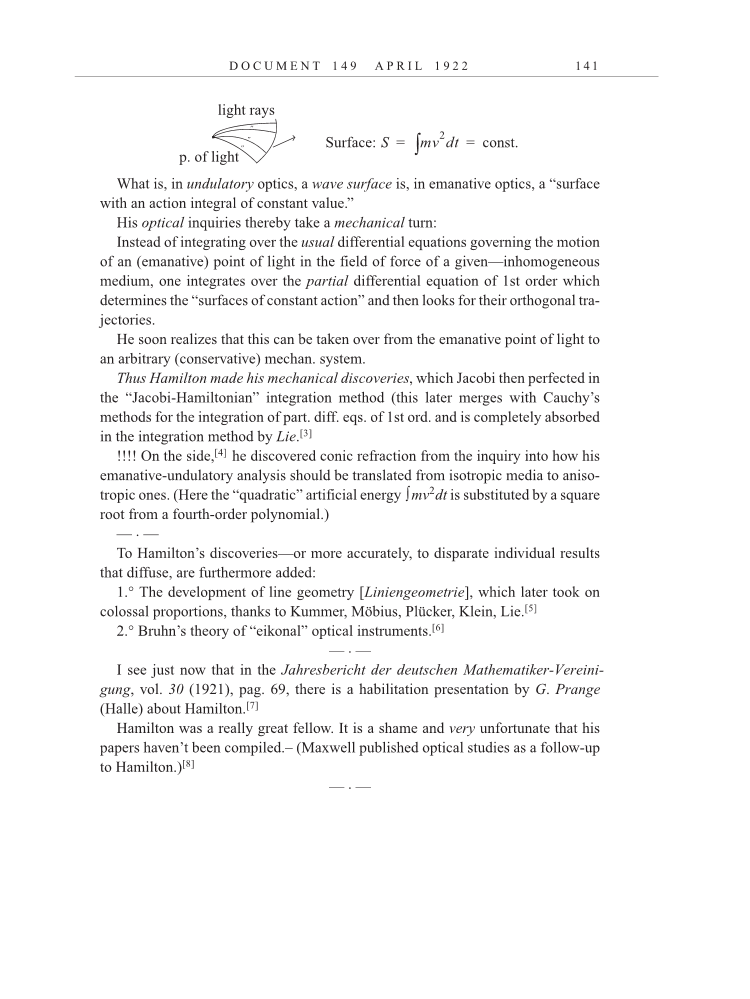D O C U M E N T 1 4 9 A P R I L 1 9 2 2 1 4 1 What is, in undulatory optics, a wave surface is, in emanative optics, a “surface with an action integral of constant value.” His optical inquiries thereby take a mechanical turn: Instead of integrating over the usual differential equations governing the motion of an (emanative) point of light in the field of force of a given—inhomogeneous medium, one integrates over the partial differential equation of 1st order which determines the “surfaces of constant action” and then looks for their orthogonal tra- jectories. He soon realizes that this can be taken over from the emanative point of light to an arbitrary (conservative) mechan. system. Thus Hamilton made his mechanical discoveries, which Jacobi then perfected in the “Jacobi-Hamiltonian” integration method (this later merges with Cauchy’s methods for the integration of part. diff. eqs. of 1st ord. and is completely absorbed in the integration method by Lie.[3] !!!! On the side,[4] he discovered conic refraction from the inquiry into how his emanative-undulatory analysis should be translated from isotropic media to aniso- tropic ones. (Here the “quadratic” artificial energy mv2dt is substituted by a square root from a fourth-order polynomial.) — . — To Hamilton’s discoveries—or more accurately, to disparate individual results that diffuse, are furthermore added: 1.° The development of line geometry [Liniengeometrie], which later took on colossal proportions, thanks to Kummer, Möbius, Plücker, Klein, Lie.[5] 2.° Bruhn’s theory of “eikonal” optical instruments.[6] — . — I see just now that in the Jahresbericht der deutschen Mathematiker-Vereini- gung, vol. 30 (1921), pag. 69, there is a habilitation presentation by G. Prange (Halle) about Hamilton.[7] Hamilton was a really great fellow. It is a shame and very unfortunate that his papers haven’t been compiled.– (Maxwell published optical studies as a follow-up to Hamilton.)[8] — . — p. of light light rays ˝ ˝ ˝ Surface: S mv2dt const. = =
